Named after Lord Dhanwantari, the deity of Ayurveda, this rich, potent decoction of Dhanwantaram Ghritam is a versatile combination of herbal drugs which balance the Vata and Kapha elements in the body. It remedies structural and functional weaknesses in the osteomuscular system and the nervous system. It has clinically established efficacy in all kinds of rheumatic complaints.
Ghrita or medicated ghee harnesses the healing properties of herbs and roots in a nourishing fat base. Ayurveda attributes sookshma property to ghrita, i.e. it is capable of reaching deep into tissues, and heals from within. It is perfectly suitable for long term use in sustaining the effects of treatment in a body and preventing relapse.
Dhanwantari Ghritam is used with good results in preventing the onset of Diabetic complications like nerve weakness, renal dysfunction, chronic ulcers etc.
Features & Benefits
- Dhanwantaram Ghritam is an elaborate combination of 42 prime Vata-hara drugs that address all aspects of inflammatory diseases in a nourishing base of ghee.
- Dasamoola or the anti-inflammatory group of ten roots along with Bala, Devadaru, Kushta and Rasnapacify all aspects of Vata derangement like pain, edema, dryness, roughness and loss of mobility.
- It enhances nerve strength and function. It is beneficial in the treatment of palsies, strokes, tremors and tics.
- Dhanwantaram Ghritam helps in regaining lost strength and function in chronic diabetic patients. It is beneficial in the management of complications of long-standing diabetes. It has distinct efficacy in preventing the progress of retinopathy and neuropathy.
- Diuretic drugs like Punarnava and Satahwa improve blood circulation and lymph drainage from the body. It draws out deep tissue swelling and oedema.
- Ashwagandha, Shatavari and similar nourishing drugs are also an important part of the Dhanwantaram Ghritam combination. It reaches deep into degenerative joints to nourish and heal in a holistic manner.
- Seasonal use of Dhanwantaram Ghritam is highly recommended for maintaining health in geriatric patients. It helps in improving joint strength and mobility. It is advised as a holistic way to overcome rigidity and general fatigue.
Dosage and Instructions
Adult: 10-15 ml Dhanwantaram Ghritam, early morning on empty stomach, or at bedtime, followed by half a glass of lukewarm water, as recommended by the Physician.
Child: 5-7 ml Dhanwantaram Ghritam, early morning on empty stomach, or at bedtime, followed by half a glass of lukewarm water, as recommended by the Physician.
Key Ingredients
Bala (Sida cordifolia Linn)
Country mallow, also referred to by its scientific name Sida cordifolia Linn. The Ayurvedic medicine system considers Balaor Sida cordifolia as a tonic, astringent, emollient, and aphrodisiac. The drug also forms a chief ingredient of several essential formulations and preparations in Ayurveda. Internally, Balais believed to be a very effective nervine tonic and Rasayana for various Vata disorders.
Kulatha (Dolichos biflorus)
Kulatha is one such dietary article having multiplicity in use from time immemorial. It can be utilized in different therapeutic conditions as food and also as medicine. They are good sources of proteins.t has been included under the Pathyas of many diseases such as Prameham, Amavatam, Swasam etc.
Vilwa (Aegle marmelos)
Vilwa is also called Aegle marmelos. The Bael tree or Bilva (in Sanskrit) is an ancient Ayurvedic tree known for its spiritual and medicinal importance. It is one of the Dashamoola (group of ten roots) herb. Belpatra is said to have anti-inflammatory properties and can be applied on any inflamed region for quick relief. Bael is said to have anti-fungal and anti-viral properties, due to which it is used in treating a number of infections in our body.
Agnimantha (Premna integrefolia)
The extracts of Agnimantha play a vital role in improving skin glow and texture. It prevents dark circles, blemishes, breakouts, scars left after the healing of acne, suntans, and various signs of aging and provides a natural radiance to the skin.
Shyonaka (Oroxylum Indicum)
It detoxifies the blood, cleanses wounds and helps in faster healing.
Gambhari(Gmelina arborea)
One of the Dashamoola roots it effectively reduces inflammation and improves wound healing. The potent antioxidant properties help in cleansing the blood and removing dullness of skin and wrinkles.
Patala(Stereospermum suaveolens)
The herb is highly effective in purifying the blood. It also treats burns, wounds, reduces blisters, and provides relief from pain and burning sensation.
Shalaparni(Desmodium gangeticum)
The extract is highly beneficial in treating allergic conditions and skin infections and provides relief from redness, itching, and dryness. Being an amazing skin emollient, this prickly dried fruits of the Gokshura tree treats skin infections and inflammatory conditions. It also helps in treating the various signs of ageing like wrinkles, fine lines, dark circles, etc. and bestows a smooth, glowing, revitalized skin.
Brihati (Solanum indicum)
The use of Brihatiin this oil helps reduce Vata disorders. It treats different types of skin infections and nourishes and rejuvenates the skin.
Kantakari (Solanum virginianum)
The Kusthahara property of this herb holds high value in treating skin diseases, helping in wound healing and promoting skin health. Yellow Berried Nightshade is one of the chief ingredients in Dashamoola Rasayanam, an Ayurvedic preparation for the treatment of respiratory ailments. The herb is also a digestive and carminative, which facilitates the treatment of gastrointestinal problems.
Gokshura (Tribulus terestris)
Being an amazing skin emollient, these prickly dried fruits of the Gokshura tree treat skin infections and inflammatory conditions. It also helps in treating the various signs of aging like wrinkles, fine lines, dark circles, etc. and bestows smooth, glowing, revitalized skin. Land Caltrops have been used for centuries as a general tonic by the Ancient Greeks. It is used in Ayurvedic medicine to maintain efficient kidney and urinary functions and in reducing renal discomfort. It is effective in treating urinary tract disorders because it promotes the flow of urine and cools and soothes the membranes of the urinary tract. Land Caltrops has also been described as an aphrodisiac in Ayurveda.
Daruharidra (Berberis aristata)
Also known as Haldi, this vibrant yellow colored spice checks the worsening of Pitta doshas like jaundice. The powerful anti-inflammatory and antiseptic properties of turmeric help in evading infections and treating various skin conditions. Tree Turmeric is a revered herb in Ayurvedic medicine. Possessing antibacterial, anti-inflammatory, antipyretic and antiseptic properties, the herb is used as a cholagogue, stomachic, laxative and diaphoretic.
Manjishta (Rubia Cordifolia)
Manjistha or Indian Madder is considered to be one of the best blood-purifying herbs. It is mainly used to break down blockages in the blood flow and remove stagnant blood. Manjistha herb can be used both internally and externally on skin for promoting skin whitening. It helps manage acne and pimples by inhibiting the growth of acne-causing bacteria due to its antioxidant property.
Chandana (Sanctalum album)
The addition of sandalwood or Chandana nourishes the skin by reducing pimples, acne marks, blemishes, suntan, dullness and excess oil from the skin. This potent herb pacifies Pitta doshas, cleanses the skin, reduces inflammation and effectively treats conditions like diarrhea and piles.
Sariva (Hemidesmus indicus)
Sariva is known for its refreshing coolant action, blood purifying effect Pitta pacifying properties. Sariva detoxifies the ‘ama'(toxins), hence it is very useful in gout, arthritis, chronic rheumatic disorder and glandular swellings and is Beneficial in burning micturition and yellowish urine.
Kushtam (Saussurea luppa)
Kushtam also called as sausseria lappa is a well-used drug in Ayurveda that has good anti-inflammatory and antibacterial properties. It also helps in preventing infections. The roots contain retinoids, essential oils, alkaloids, insulin and other minor constituents like tannins and sugars. The root (containing both the essential oil and alkaloid saussurine) is used to treat asthma, by relaxing the bronchioles. The relief obtained is comparable to that of conventional bronchodilators without side effects.
Thagara (Valeriana wallichii)
Also called as Valeriana wallichii, it calms the mind by interfering with brain chemicals (GABA) that communicate information between the nerve cells in the brain. It induces good sleep and reduced stress. Indian Valerian is recommended for the treatment of insomnia. It stimulates the central nervous system and reduces spasms and anxiety. Records have shown that the herb, which grows in abundance in the temperate Himalayan regions, has been medicinally used in the 16th century to treat trembling, delirium tremens, headaches and heart palpitations.
Punarnava (Boerhaavia diffusa)
Punarnava, a potent Ayurvedic has immense health benefits and has been in use since ancient times in treating a host of health anomalies. Commonly known as Hogweed, Sterling, Tarvine in English, Mukarati Kirei in Tamil, Raktakunda, and Shothaghni in Sanskrit, it goes by the botanical name Boerhavia diffusa. Punarnava has powerful analgesic and anti-inflammatory properties, which is extremely beneficial in reducing joint and muscle pain, thereby reducing the chances of chronic autoimmune inflammatory diseases like rheumatoid arthritis.
Aswagandha (Withanya somnifera)
Ashwagandha is commonly used for stress. It is also used as an “adaptogen” for many other conditions, but there is no good scientific evidence to support these other uses. Ashwagandha contains chemicals that might help calm the brain, reduce swelling (inflammation), lower blood pressure, and alter the immune system. The root contains steroidal compounds which include the lactones Withaferin A and carbon-27-glycowithanolide, known collectively as the Withanolides. The Withanolides are responsible for the varied medicinal applications of the herb. Winter Cherry also contains a fair amount of alkaloids including tropine, pseudotropine, isopelletrine, anaferine and saponins, which impart medicinal properties to the herb.
Ela (Elettaria cardomum)
Commonly used as Elaichi, it has a very good antibacterial and antifungal properties. It helps in reducing inflammation. Cardamon is often given the epithet ‘Queen of spices’ as it is used to flavor food in many countries. in addition, the herb has several health benefits. The German Commission E has indicated the use of Cardamom in dyspepsia and as a cholagogue, which promotes bile discharge from the system. The herb is also helpful in treating gum and teeth infections, throat congestion and kidney disorders.
Shilajit (Black bitumen)
It is one such herbo-mineral or Rasaoushadhi that has remained a crucial component in the process of healing for centuries. Sanctified with powerful adaptogenic and aphrodisiac properties, Shilajit or Asphaltum as denoted in English is not only used for managing stress and anxiety but also plays a significant role in treating conditions like dysuria, glycosuria, breathing disorders, urinary disorders, kidney stones, edema, skin diseases, phthisis, piles, anemia, epilepsy, mental disorders, and worm infestation. The main function of Shilajit is to regulate and improve the functions of the thyroid gland.
















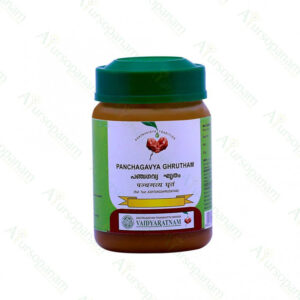
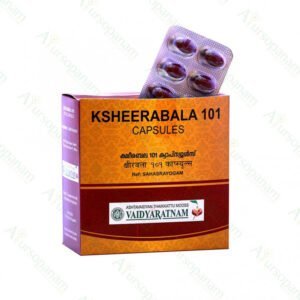


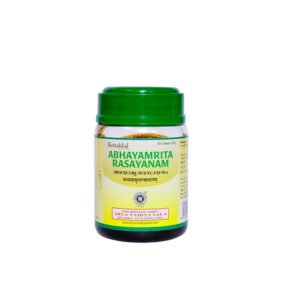













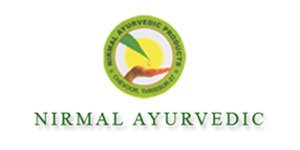




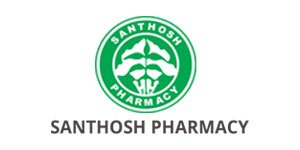

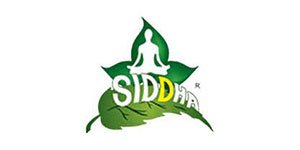











Ratings & Customer Reviews
Reviews
There are no reviews yet.